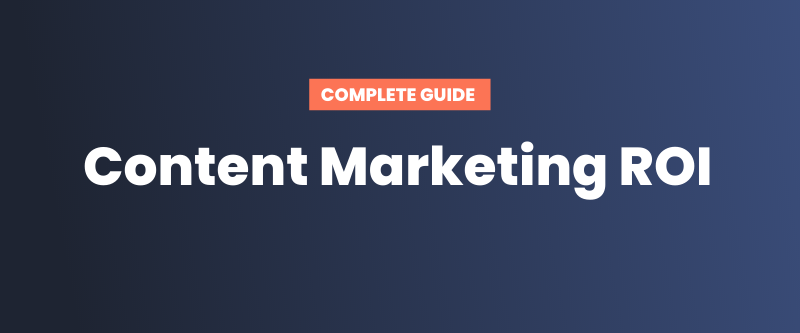How long should your blog posts be? Since blogging is the most critical part of your content marketing strategy, this is a question that you shouldn’t take lightly.
Bottom-line, for your blog to be successful, you need to understand the roles that short-form content and long-form content play in blogging and how to write a blog post that delivers the results you want and need.
The Quality vs. Quantity Debate

Why is there a debate between quality and quantity in blogging?
The simple truth is because there isn’t a clear answer to the question of whether quality or quantity is more effective.
This is a debate that has been going on for years. A decade ago, the winner of the quality vs. quantity debate was clear. Quantity trumped quality for anyone who wanted to increase traffic to their blogs.
Everything changed in 2011 when Google released its Panda algorithm. Suddenly, every tactic and strategy that bloggers had been using to drive search engine traffic to their blogs and websites didn’t work anymore.
In fact, continuing to use those tactics and strategies led blogs to receive Google penalties that meant little or no future traffic from the largest search engine in the world. Many leading blogs and blog networks suffered and some disappeared completely.
I was there. I wrote for a bunch of them. It was a dark time in the blogosphere.
And thus, the quality vs. quantity debate in blogging began.
What do Quality and Quantity Mean in Blogging?
Before we dive into the details of what works best today, let’s take a closer look at what quality and quantity mean in the blogging world.
Quality refers to substantive content that is useful, meaningful, and answers the audience’s questions or solves their problems thoroughly.
Take note of the word “thoroughly” because that’s what quality is all about.
To be thorough, a blog post usually needs to be long.
Now, it’s important to point out that quality = length isn’t my opinion. I believe you can deliver massive quality in few words if you’re capable of writing succinctly. The quality = length equation comes from Google’s search algorithm.
In other words, when Google’s search algorithm evaluates your blog posts, a 2,000-word post is deemed more thorough and higher quality than a 200-word post.
Of course, I’m simplifying things here. Google looks at hundreds of criteria to rank content in its search results, but research shows, Google prefers longer posts than shorter posts today.
On the other hand, quantity refers to how often you publish new blog posts on your blog.
Every new post creates a new entry point for people to find your blog and website, so there is certainly value in publishing a lot of content. That’s how news blogs get most of their traffic – by publishing a lot of short, timely content.
Because it takes time to publish a lot of blog posts, content is typically shorter for blogs that focus on publishing lots of fresh posts. Google likes fresh content, but as you learned above, publishing fresh content isn’t the only factor that plays a part in Google’s algorithm.
What the Data Says Works Today
Based on research conducted by HubSpot, the more blog posts you publish, the more traffic you’ll get. In fact, the smaller your company, the larger effect that publishing more blog posts has on traffic.
HubSpot’s research found that companies publishing 16 or more blog posts per month get the most inbound traffic. HubSpot also found that publishing more blog posts drives more inbound leads.
Based on that research, you’d think the answer to the quality vs. quantity debate would be to publish more blog posts, right?
Wrong.
There is more to this story as Backlinko found after analyzing one million Google search results. The research team discovered that long-form content delivers higher Google search results rankings than short-form content.
According to Backlinko’s research, blog posts with 2,000 words deliver the best search engine results rankings.
So what do you do with this conflicting data?
How to Strike the Right Balance Between Quantity and Quality
The key to blogging success is to strike an appropriate balance between publishing high quality long-form content and quick-hitting short-form content.
Here I want to point out something very important. Ideally, all of your blog content (long and short) should deliver quality or your posts will waste your audience’s time. Waste their time too often and they’ll stop visiting and reading your content entirely.
You don’t want that to happen, so set your audience’s expectations and deliver on those expectations consistently.
How?
Focus on developing a content strategy that provides the right mix of short and long high-quality content.
The reality is everyone doesn’t like to read long blog posts. There are people in your audience who want the full story in fewer than 500 words or in a simple list.
The best content marketing plans account for different people’s content preferences. Your goal should be to surround people with brand experiences (using content) so they can self-select how they want to interact with your brand.
That means both short-form and long-form content have places in your content marketing plan and your blog calendar.
Five Steps to Develop a Successful Blog with Short-Form and Long-Form Content

Developing a successful blog requires a solid strategy, so carve out some time to complete the five steps discussed below. You don’t want to waste time creating and publishing blog posts that don’t help you (or your audience), so planning is crucial.
1. Define Your Blog Goals
Why are you publishing blog posts? What do you hope to achieve by blogging?
The answers to these questions will guide your blog strategy.
For example, some people blog to generate revenue through ad sales. If that’s your goal, then you need to get a lot of traffic to your blog. Your blog strategy will likely be heavy with short-form posts.
On the other hand, if your goal is to get transactional conversions from your blog to generate sales revenue, demo sign ups, and so on, then traffic is a vanity metric for you. Instead, you should be publishing more long-form content.
2. Know Your Audience
Who is your target audience? What is important to them? How can you answer their questions or solve their problems with your blog content, products, and services?
When you answer these questions, you’ll be able to solve your target audience’s problems through your content.
For a news-oriented blog that focuses on generating ad revenue, publishing information about hot topics often could be a winning strategy. In this situation, quantity may trump quality.
However, for a company blog that focuses on attracting laser-focused leads, a better strategy could be to focus on publishing more thorough, high-quality quality content than a large quantity of posts.
3. Do Your Research
What does your audience want or need from your blog content? What keywords do they use when they perform Google searches related to your business, products, or services? What is their search intent?
By doing your research and fully understanding what your audience wants or needs from a blog like yours, you can deliver the perfect solution. This is how you build brand trust and a relationship with consumers that leads to sales, loyalty, and advocacy.
With that said, spend time researching search habits, your competitors blogs and search engine strategies, and the analytics of your own marketing efforts, including your website and blog traffic, email marketing results, digital advertising, and so on.
Ultimately, people go online to find content that educates, informs, or entertains them. What do they want from a brand like yours? Do your research and deliver it to them.
4. Create a Content Plan
To create a powerful content plan, leverage all of the research and data you’ve collected and use the three strategies below to hone in on your most important blog post topics:
- Problem – Solution: What are your audience’s problems and how can you solve them in your blog posts?
- Question – Answer: What are your audience’s questions and how can you answer them in your blog posts?
- Fresh – Refresh: What new post topics are relevant to your audience (fresh) and what old posts can you refresh to make them current (or better)?
Create a spreadsheet to list problems and solutions, questions and answers, and fresh and refresh posts and topics. Once your spreadsheet is comprehensive, review it for topics that make sense for in-depth, long-form coverage or quick-hit, short-form coverage.
Keep in mind, long-form content is typically evergreen content that can stand the test of time. That’s the purpose of the refresh process. Look for old posts that can drive organic search traffic over time, and make sure they’re always current and relevant to your target audience.
5. Track and Measure Your Results
Use a tool like Google Analytics to track the performance of your blog posts and measure results against your goals.
With this data, ask yourself the following questions:
- Are you hitting your goals?
- Is new content getting traffic?
- Are people clicking around when they land on your blog posts?
- What actions do people take after reading your blog posts? Are those the actions you want them to take?
- Are old posts getting organic traffic?
- Do you need to improve old content?
- Do you need to change your content plan?
The data will tell you what’s working and what’s not, so you can make adjustments and optimize your results on an ongoing basis.
Your ultimate goal is always to delight your target audience, so use that goal to guide your decision-making process and your content strategy.
Key Takeaways About Quantity and Quality Blog Posts
Remember, there is no single answer to the question of which is better for blogging success – quality or quantity.
However, when you define your goals, understand your audience, do your research, develop a strategic plan, and track your results, you’ll be able to develop a blog that delivers measurable returns with the right quantity of high-quality short-form and long-form posts.






